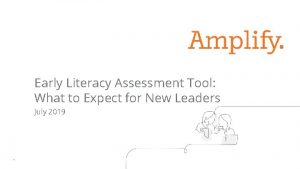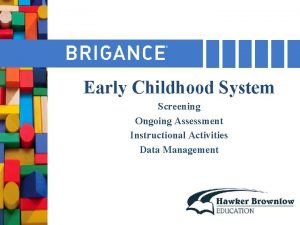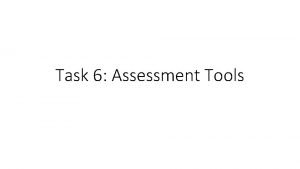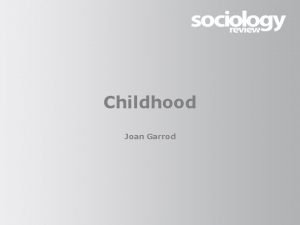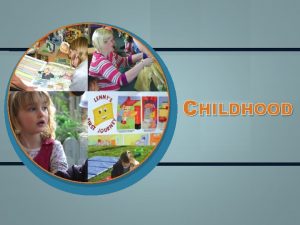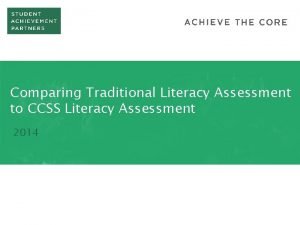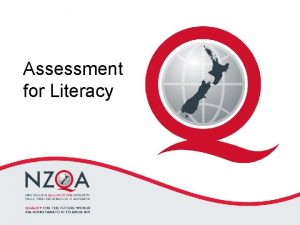Education Childhood Literacy Childhood Literacy Assessment Tools Office








- Slides: 8

Education Childhood Literacy: Childhood Literacy Assessment Tools Office of Overseas Programming & Training Support (OPATS)

Childhood Literacy Assessment Tools By the end of the session, participants will: § Describe three kinds of assessment; § Explain at least two purposes for assessment; § Explain the EGRA and ASER assessments and which component part of literacy each one assesses; and § Practice using the two tools.

Thinking about assessment § Think back to a time that you were assessed on something you had recently learned. § What methods were used to assess your learning? § Do you think the tools or methods used to assess your learning were good ones? § How do you evaluate whether they were good or not? ”

Kinds of Assessment § Diagnostic - Looks at students’ prior knowledge, skills, interests, and misconceptions. This information assists the instructor in planning instruction. § Formative - Administered during the course of a unit, these ongoing assessments provide information on what students are learning at various points through a period of time. § Summative - Typically assess what students have learned in a unit or course. These tend to be evaluative, result in grades, and often are used as indicators of student achievement.

Purposes of Assessment § One purpose is to identify skills that need review. Assessment provides teachers with information on what skills students have and have not mastered. § A second purpose is to monitor student progress. A teacher can learn which students need review before covering additional content and which students are ready to move forward. § A third purpose is to guide teacher instruction. Through consistent assessment, a teacher can make informed decisions about what instruction is appropriate for each student. § A fourth purpose is to demonstrate the effectiveness of instruction. § A fifth purpose of assessment is to provide teachers with information on how instruction can be improved.

Literacy Skills and Reading Assessments Two tools to assess the components of literacy and learning to read have recently gained traction: § EGRA – Early Grade Reading Assessment; and § ASER § We will explore them next.

Tool Debrief § Was the tool easy or hard to use? § Are there areas of the assessment you might think your counterpart teachers will have trouble with? § How do you think the results can be used in the classroom? § Are there other uses for the results of this kind of assessment? § Pros/Cons of each tool? § Which tool did you prefer? Why? (ask after pairs have tried both)

Application Debrief § What did it fell like to try the two tools with young children? § Were they easy to use? Hard? § What were the results? § Did the child (children) do better on one assessment than the other? Which one? § What did the results tell you about the skills of the children you live with? § If you were teaching these children literacy/reading skills, what would you emphasize based on the results you found?
 M class.amplify.com/student
M class.amplify.com/student Middle childhood age
Middle childhood age Media literacy and information literacy venn diagram
Media literacy and information literacy venn diagram Memes about media and information literacy
Memes about media and information literacy People in media or people as media
People in media or people as media Cyber literacy and digital literacy
Cyber literacy and digital literacy Kentucky governor's office of early childhood
Kentucky governor's office of early childhood Ongoing assessment early childhood
Ongoing assessment early childhood Rockefeller professional development
Rockefeller professional development
